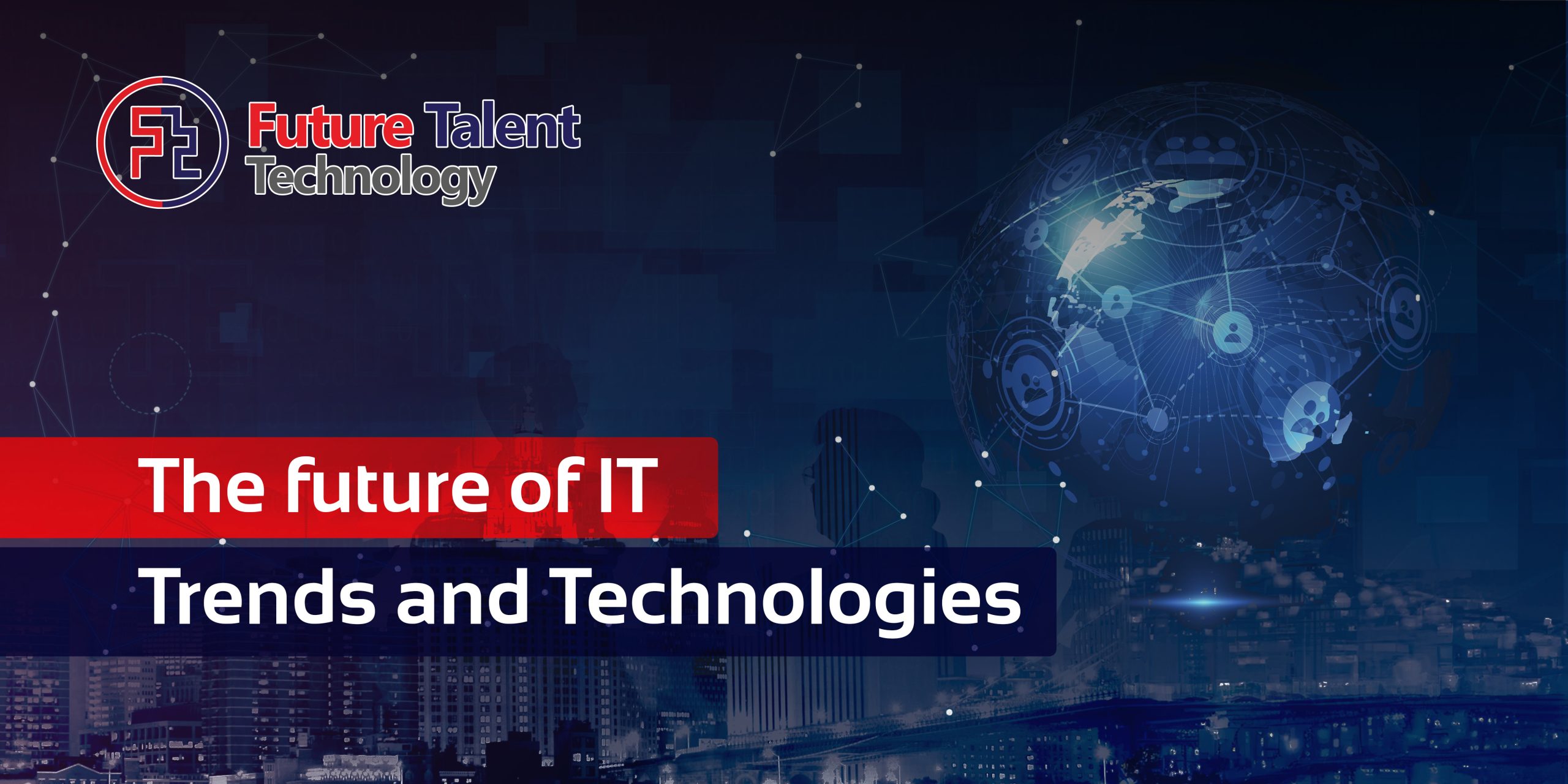The future of IT : Trends and Technologies
 Every year, new technologies emerge that provide new solutions to business difficulties and everyday concerns. Some of these last, while others fade away, allowing new technology breakthroughs and companies to enter the game. It can be tough to determine which developing technologies are worth investing in and which should be avoided.
Every year, new technologies emerge that provide new solutions to business difficulties and everyday concerns. Some of these last, while others fade away, allowing new technology breakthroughs and companies to enter the game. It can be tough to determine which developing technologies are worth investing in and which should be avoided.
New technologies have the potential to disrupt and significantly transform a variety of businesses, particularly those that rely largely on information technology. Because of this vitality, the IT industry is seeing exponential growth. The rate of development is so rapid that even predictions might lag and appear out of date.
In this blog, we will look at the top five trends in information technology that will determine the future.
The Internet of Things (IoT)
The Internet of Things (IoT) enables businesses to get better results by connecting devices such as wearables and sensors.IoT devices are increasingly being employed across a variety of businesses. A big portion of this expansion stems from the increased bandwidths we are seeing with 5G. Parallel to this expansion is the need for greater cybersecurity, particularly with IoT. IoT has historically been a popular target for hacks due to its open interconnectivity. Providers will redirect their efforts to guarantee that the Internet of Things becomes more secure.
USES:
More choices for autonomous transportation
Monitoring buildings and the environment to improve energy usage and identify dangerous conditions
Improved fleet management.
Enhanced healthcare monitoring and improved patient outcomes.
Cybersecurity
The growing number of cyber-attacks on the corporate sector’s digital ecosystem, SMEs, major companies, and other industry verticals, as well as the rise in phishing operations, harm organizational reputation and customer base. Because of this threat, cybersecurity has evolved as an essential component of the IT industry. Companies are investing more to improve security and protect data from unscrupulous hackers.
Security has become a functional requirement because organizations cannot lose the trust of their stakeholders. Furthermore, AI and IoT breakthroughs will drive huge growth in the cybersecurity market.
Uses:
Protecting data and systems from illegal access or cyberattack.
Detection and prevention of malware, viruses, and other malicious applications.
Ensuring the confidentiality, integrity, and availability of sensitive data.
Edge Computing
Edge computing is one of the most recent innovations in the software business. It comprises a calculation at the network’s edge, near the data generators. This trend is driven by the desire for more dependable and faster data processing. However, many firms continue to rely on cloud computing for their applications.
Edge computing is a sort of internet-based computing. It enables organizations to access applications and services via the Internet.
This decentralized form of data handling reduces latency, which is crucial for real-time activities. As a result, edge computing technology will become more widely adopted in logistics, smart manufacturing firms, and healthcare institutions. Furthermore, edge computing will make a substantial contribution to cybersecurity, as dispersed nodes are less sensitive to cyberattacks than single platforms.
Uses:
Improved response times by moving processing closer to the devices.
Make better use of bandwidth by eliminating the need for data to go to a central cloud.
Devices can make decisions in real-time rather than waiting for remote server instructions.
Digital Transformation
A digital platform is a set of software and hardware solutions that businesses utilize as part of their digital strategy. Digital platforms are venues where businesses may connect with customers. Furthermore, depending on the company’s business strategy, digital platforms can help enterprises interact with B2B clients, investors, and providers. They can be used to exchange things, as well as information, knowledge, and services.
Uses:
Enabling seamless cooperation and communication among enterprises.
Improving customer engagement with user-friendly digital interfaces.
Optimizing workflows and automating operations to improve efficiency.
How can FTT help?
Being the best IT solution and service in Dubai, FTT has more than 20+ experience in the field of IT. We make sure to provide and present the latest technologies and updates in the field of the IT sector.
Contact us to know more.